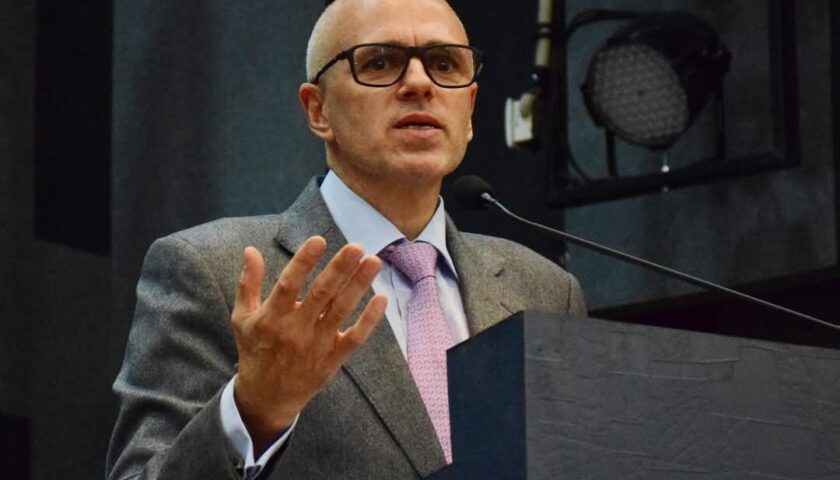State response to petition challenging Art 35A likely to be submitted in SC today
 Defending Article 35 A of the Constitution, which grants special rights and privileges to permanent residents of J&K, the PDP-BJP coalition government in its draft objections, likely to be submitted before the Supreme Court tomorrow, has stated that “accession” of J&K to India is “limited in scope and not absolute”.
Defending Article 35 A of the Constitution, which grants special rights and privileges to permanent residents of J&K, the PDP-BJP coalition government in its draft objections, likely to be submitted before the Supreme Court tomorrow, has stated that “accession” of J&K to India is “limited in scope and not absolute”.
Seeking dismissal of the petition by an RSS-backed think tank challenging the constitutional validity of Article 35A, the J&K government in its objections has stated that “as a ruler of the princely state of J&K, Maharahja Hari Singh wanted to remain independent, and he “signed the Instrument of Accession with Dominion of India as a last resort to save his state from tribal invaders”.
The petition challenging Article 35A, listed before the apex court registry on November 3, was filed more than a year ago by We the Citizens, a Delhi-based non-governmental organisation, through its president Sandeep Kulkarni.
J&K advocate general Jahangir Iqbal Ganai will represent the state before the apex court on Tuesday. However, sources indicated that the government at the last moment might modify or not submit the draft objections before Supreme Court on November 3. The objections have been formulated and settled by the advocate general in consultation with the Law Department and vetted at the highest level in the government.
To defend Article 35 A and Article 370, which grants special status to J&K, the state government in its draft objections has also explained the circumstances under which the state come into existence and cited the 1956 Treaty of Amritsar, under which the Kashmir valley was bought from East India Company by Maharaja Gulab Singh for a paltry sum of Rs 75 lakh.
The government has also placed on record the copies of Instrument of Accession signed on October 26, 1947; the Government of India Act, 1935; Cabinet Mission, 1946; Mountbatten Plan, 1947; Indian Independence Act, 1947; and India (Provisional Constitution) Order, 1947; as annexures and as the supporting historical documents to prove the point that “scope of accession was limited and not absolute”.
“The state of J&K being a princely state did not accede to either Dominion of India or Pakistan. It chose to remain independent. The ruler of Jammu and Kashmir offered to sign a standstill agreement with both India and Pakistan…,” the draft objections read while dwelling into the history of Accession.
On October 20, 1947, armed tribesmen invaded Kashmir intending to liberate it from Dogra rule. Unable to withstand the invasion, the Maharaja approached Dominion of India for military help to meet the challenge that confronted the state,” the objections state, adding that the India had its “reservations” and conveyed “its inability to deploy the Indian Army” in absence of a “formal accession” by the ruler.
“The ruler of J&K, Maharaja Hari Singh, realising that assistance won’t come from India, thought of accession to save the state. It was only as a last resort that the maharaja approached the Dominion of India to accept the accession,” the state government has said in draft objections.
It further states that the Governor General of India, while accepting the Instrument of Accession, signed on October 26, 1947, made it clear in his “letter of acceptance” that as soon as law and order would be restored in Kashmir and her soil cleared of the invader, the question of the state’s accession would be settled by “a reference to the people”.




